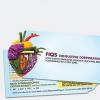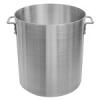Hi alvindman/syju,
I can offer a few comments although zero experience this area. Apologies in advance if following text duplicates info. already posted.
I assume the product is definitively intended to be "Food Grade". ?
i agree with OP that logically fssc should only be concerned with safety. SQF levels 2/3 would be a different situation.
With respect to specifications an analogous thread for nitrogen (2011) is here -
http://www.ifsqn.com...-in-production/
IMO it will be necessary, additionally to fssc, to demonstrate that the finished product is "Food Grade" where this is interpreted as having a composition in compliance with the Purity requirements as referenced to an "appropriate" standard. (I assume that, as in Excel, the objective for final product is "Food Grade")
It will probably be necessary to evaluate / validate that all the declared max. "contaminant" levels are complied with, regardless of whether specifically safety-relatable or not. Such is a "Food Grade" ingredient. (I recall there are some similar "safety" issues with Compressed Air micro. standards)
Some declared Food Grade standards do exist, eg -
http://www.boc.com.a...xide-food-grade
http://www.linde-gas...ases/index.html
(previously Linde published their specs in the open (eg see top linked thread/post3/N2), but seems no longer).
PS - regarding excel -
Offhand, i am unsure how you can make a risk assessment on a mixture of contaminants. Particularly as their individual hazard statuses appear as yet unspecified.
For the purposes of fssc, i would expect the "input" in "1C" to be handled as a PRP in view of text in typical iso22002 standards. Non-compliance with the input specification would result in rejection. (in a normal way, excessive rejection rates would impact a "supplier's approval",. seems you may require an analogous internal criterion).
If it is known that a later process step will eliminate a specific hazard, this "auto-cancels" the input risk. So if you can validate that a given (max.) level of a specific hazardous contaminant is satifactorily reduced to <= Food Grade level in the final output, this should be an effective PRP specification).
Failure of a non-safety parameter does not prevent the input being rejected purely on QA grounds of course (~=SQF Lvl 3)
IMO whether there are any CCPs / OPRPs requires specific knowledge of the process / how individual contaminants are handled / new hazards generated.
I suspect a little more research required from a fssc / hazard POV.























